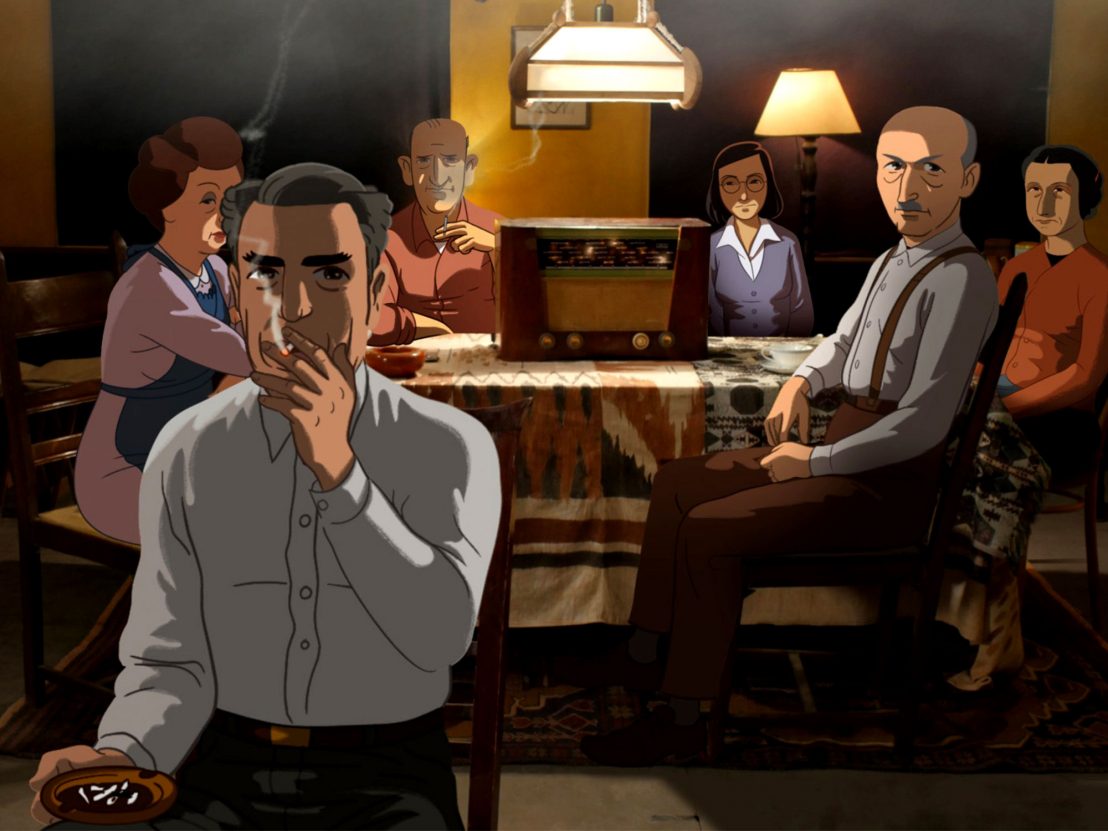
Ari Folman’s animated retelling of the wartime diarist’s tragic story falls foul of some questionable artistic license.
The problem with trying to make an adaptation of Anne Frank’s diary is that it’s awfully hard to create anything as moving and poetic as the source material. Although Ari Folman’s aim in updating her story for a younger audience is a noble one – and as the son of Auschwitz survivors it’s impossible to deny his connection to Frank – he makes more than a few missteps along the way.
Originally commissioned by the Anne Frank Fonds in 2009, Where Is Anne Frank? attempts to introduce a new generation to the heart-breaking true-life tale of the teenage diarist who hid from the Nazis in a secret annex for two years only to die in the Bergen-Belsen concentration camp in February 1945, two months before it was liberated. Folman’s way into the story is by setting it in the present, at the Anne Frank Museum in Amsterdam, and conjuring up the character of Kitty, Anne’s imaginary friend who she addressed her diary entries to.
There’s something quite off-putting about the character design, inspired by the work of Wes Anderson’s regular puppeteer Andy Gent and illustrated by David Polonsky. Kitty is introduced as a freckled white girl with red hair whose looks are inspired by the movie stars Anne loves – strangely, she is described as having a “slim figure” while the Anne Frank Museum’s curator is portrayed as a bumbling fat man.
It’s disappointing that Folman would choose to differentiate between ‘good’ and ‘bad’ characters based on their size, especially this given the subject matter. The voice acting is distracting too; presumably in a bid to appeal to a mass market, all the characters speak with American or British accents despite the film being set in the Netherlands.
Kitty (Ruby Stokes) appears as a ghostly figure in the present, searching for Anne amid the backdrop of the ongoing European refugee crisis. Folman links the treatment of current refugees with the treatment of Jews and other marginalised groups under Nazi rule, and Kitty finds a friend in the form of teenage pickpocket Peter (Ralph Prosser), just as Anne (Emily Carey) found one in Peter Van Daan (Sebastian Croft). She also grows close to a Malian family who are threatened by the city’s crackdown on asylum seekers, all the while trying to find out what happened to her best friend.
Although this is an inventive take on the Anne Frank story, and Folman does well to draw parallels between the rise of the Nazis and the current resurgence of far right nationalism in Europe, it feels wrong to accredit the words of Frank to Kitty. An early scene in which a pre-war Anne struts down a street explaining how all the boys she knows are in love with her is in remarkably bad taste, while a joke about Justin Bieber’s infamous trip to the museum in 2013 is just plain cheesy.
If the film achieves its goal of educating younger viewers about Anne’s life and the parallels between the Frank family and thousands of others across the globe today, then more power to Folman. But the execution is flawed and adult viewers are unlikely to learn anything that couldn’t be gleaned from reading her diary.
Little White Lies is committed to championing great movies and the talented people who make them. But to keep going, and growing, we need your support. Become a member today.
Published 13 Jul 2021

A masterful dissection of love, memory and autobiography from the ever-wonderful French maestro, Mia Hansen-Løve.

Joachim Trier returns to Cannes with a keenly-observed drama about the often turbulent nature of modern romance.

Lip-smacking provocation and saucy humour abounds in Paul Verhoeven’s rip-roaring nunsploitation romp.